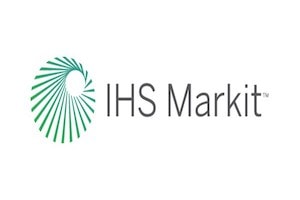You Ask, We Answer: MySQL Versus Its Competitors – Where Does the RDBMS Stand in Today’s Market?
Here at Sirius, we often get asked, "How does MySQL stack up against rivals like PostgreSQL, Oracle, and MariaDB?" This is a critical question, and one that deserves a clear, honest answer. We understand that when selecting a foundational technology like a database, comparisons are essential for making an informed purchasing decision, especially since consumers are naturally driven by information and comparison when making purchases.
We want to be fiercely transparent right from the start: MySQL retains its fundamental position as the most popular open-source RDBMS by install base, valued for its simplicity and massive community ecosystem. However, the modern data landscape demands specialization, and relying on MySQL as a universal default today risks encountering architectural compromises when dealing with high-scale or high-integrity environments.
This article will explain the pros and cons of MySQL versus its chief rivals across key variables like scaling, feature depth, consistency, and Total Cost of Ownership (TCO). Our goal is to serve as an unbiased expert and thought leader by openly discussing these comparisons, enabling you to make the most informed decision possible for your specific architectural needs.
Section 1: Establishing the Baseline – MySQL’s Strengths and Conditional Weaknesses
When comparing MySQL to its competitors, it is essential to first understand its core architectural trade-offs.
MySQL is lauded for its high performance, usability, and rapid deployment, cementing its role as a fundamental tool for web developers. Its extensive user base translates into a rich ecosystem, making documentation, troubleshooting, and compatible third-party tools readily available.
However, the necessity of comparison content (Versus and Comparisons) is driven by MySQL's inherent limitations, which include the following structural compromises:
- Conditional ACID Compliance: Unlike its chief rivals, MySQL only guarantees strong transactional integrity (ACID compliance) when explicitly configured with transactional storage engines such as InnoDB. This dependence creates a risk of data corruption if developers inadvertently use non-transactional engines like MyISAM.
- Vertical Scaling Priority: MySQL’s architecture is structurally dependent on vertical scaling (upgrading hardware) and deploying complex read replicas to manage write contention. This primary architectural deficiency means it relies on external solutions for sophisticated concurrency and horizontal scaling, placing it at a strategic disadvantage against purpose-built competitors.
Section 2: The Open-Source RDBMS Battle: MySQL vs. PostgreSQL
The rivalry between MySQL and PostgreSQL represents two distinct philosophies on relational database design: streamlined performance versus rigorous feature richness.
Concurrency and Integrity (The Architectural Deciders)
The critical technical distinction between the two systems is their concurrency model:
- MySQL (Thread-based): MySQL uses a thread-per-connection model that historically relies on write locks to enforce concurrency. If one user performs a complex edit, concurrent users may experience mandatory waiting time. MySQL often performs better for simple, high-frequency read operations.
- PostgreSQL (MVCC/Process-based): PostgreSQL uses a process-per-connection model and integrates Multi-Version Concurrency Control (MVCC) into its core design. MVCC eliminates the need for read-write locks, allowing multiple transactions to access the same data simultaneously without conflict. This means PostgreSQL naturally excels in handling frequent, concurrent write operations, complex queries, and large datasets.
Furthermore, PostgreSQL is built to be fully ACID compliant in all configurations and adheres more strictly to standard SQL. MySQL prioritizes speed and practicality, often incorporating non-standard, MySQL-specific extensions which can complicate later database migration efforts.
Feature Depth and Ecosystem Trends
PostgreSQL is designated as an Object-Relational Database (ORDBMS), giving it superior feature depth and extensibility.
- JSON Support: While MySQL supports JSON, PostgreSQL’s JSONB (Binary JSON) format is fundamentally more powerful. JSONB is optimized, validates documents, and offers advanced functions that MySQL often struggles to match.
- Extensibility: PostgreSQL’s architecture allows for the seamless addition of complex capabilities like geographic data types (PostGIS) and custom functions, ensuring the system is future-proofed. MySQL's extensibility is narrower, focused primarily on simplicity.
- Adoption Trend: Recent Stack Overflow Developer Surveys show that PostgreSQL has surpassed MySQL to become the most desired database among professional developers. This trend indicates that the industry favors PostgreSQL’s architectural rigor for complex, high-integrity application development.
Section 3: MySQL vs. Enterprise Giants (Oracle/SQL Server)
When comparing MySQL to proprietary powerhouses like Oracle Database and Microsoft SQL Server, the central comparison revolves around a TCO trade-off against mission-critical feature depth.
Feature Disparity
Oracle and SQL Server offer bundled proprietary features designed for the maximal scalability and performance requirements of the world’s largest enterprises.
- Performance and Scaling: Oracle utilizes a highly sophisticated cost-based optimizer and an advanced parallel query execution engine that manages heavy write concurrency far more efficiently than standard MySQL in large-scale benchmarks. Oracle’s Real Application Clusters (RAC) are designed for near-limitless high availability and linear scalability.
- In-Memory Processing: SQL Server offers dedicated In-Memory OLTP, optimizing transaction rates by processing data entirely in RAM, a strategy MySQL does not natively achieve at the same depth of integration.
The Overwhelming Total Cost of Ownership (TCO)
The exorbitant TCO of proprietary databases serves as an effective barrier to entry.
- Proprietary Cost: Oracle Database Enterprise Edition is priced aggressively (approximately $47,500 per processor license, plus mandatory annual support, which typically adds about 22%). Furthermore, essential architectural elements often require separate, additional feature packs.
- The Constraint: Comparative cost modeling illustrates that proprietary systems like Oracle Database can be 95 to 156 times more expensive over a three-year period than running MySQL Enterprise Edition. This immense cost disparity means that the cost savings offered by MySQL (often over 90% savings) are the definitive constraint driving the architectural choice away from proprietary systems for most organizations.
Section 4: MySQL vs. MariaDB (The Fork)
MariaDB is the open-source fork created in response to Oracle’s acquisition of MySQL, leading to a distinct product with differing development priorities and unique features.
- Governance and Licensing: MariaDB is fully licensed under the GPL, guaranteeing its perpetual open-source status and ensuring its development is driven by community and innovation rather than proprietary commercial interests.
- Feature Focus: MariaDB’s innovation pace has often surpassed MySQL's, and it targets enterprise compliance. A significant advantage is its native support for System-Versioned Tables (bitemporal tables), which automatically tracks historical changes to rows. This is critical for auditing and compliance in regulated industries and is a feature MySQL 8+ lacks natively.
- High Availability: MariaDB integrates Galera Cluster, providing synchronous, multi-master replication as a standard component for superior flow control and high-availability setups.
Section 5: MySQL vs. Modern Scalability Platforms
Traditional RDBMS systems like MySQL are challenged by modern applications demanding elastic, geo-distributed horizontal scalability, leading to the rise of NoSQL and Distributed SQL alternatives.
MySQL vs. MongoDB (NoSQL)
This is the classic trade-off between strong consistency and flexible scale.
- Scaling Paradigm: MySQL is optimized for vertical scaling, relying on hardware upgrades or complex custom sharding for horizontal growth. MongoDB is natively built for horizontal scalability, using integrated sharding and replication to distribute data across numerous commodity machines easily.
- Flexibility: MySQL enforces a rigid schema and guarantees strong data integrity for structured data. MongoDB stores flexible, JSON-like documents, ideal for rapid application development and quickly changing or unstructured data.
MySQL vs. CockroachDB (Distributed SQL)
CockroachDB (NewSQL) directly addresses MySQL's primary deficiency: the inability to combine strong relational consistency (ACID) with cloud-native elasticity.
- Architecture and Resilience: MySQL is fundamentally single-node. CockroachDB is a Distributed SQL database built on a consensus protocol, ensuring native bulletproof resilience and effortless horizontal scaling.
- Consistency: CockroachDB provides strong consistency across its distributed cluster by default, a necessity for globally distributed, transactional applications where MySQL's traditional replication might only offer eventual consistency. While MySQL might have faster response times for very simple queries on a single node, CockroachDB excels in scaling complex queries in a distributed environment where MySQL would bottleneck.
Strategic Decision Framework by Use Case
The recommended database choice is dictated by the primary workload characteristics and architectural constraints. When choosing a database, you must determine which trade-offs—consistency, TCO, or scaling complexity—are most critical for your application.
| Workload/Goal | MySQL Pros/Cons | Recommended Alternative | Rationale |
|---|---|---|---|
| Simple Web Applications/Read-Heavy OLTP | High read performance, low overhead, massive ecosystem | MySQL | Superior ROI for read-dominated workloads due to simplicity and low cost. |
| Complex Transactions/High Write Concurrency | Lacks native MVCC; relies on write locks | PostgreSQL | Guaranteed ACID compliance and intrinsic MVCC capability handle concurrent write contention more robustly. |
| Auditing/Compliance Mandates | Lacks native temporal data tables | MariaDB | Native System-Versioned Tables significantly reduce development and compliance risk for data history requirements. |
| Cloud-Native, Global-Scale, Strong Consistency | Single-server architecture is inadequate for elastic distribution | CockroachDB | Designed for effortless, geo-distributed horizontal scaling with guaranteed transactional integrity. |
| Mission-Critical Enterprise (High Budget) | Lacks advanced parallelism, in-memory OLTP | Oracle Database / SQL Server | Delivers specialized, maximum-performance proprietary features and vendor guarantees, despite severe TCO. |
In short, MySQL remains the accessible starting point for developers (used by 45% of learners), but for complex, high-end applications, open-source specialization has become the defining trend. You are trading MySQL’s operational simplicity for the robust concurrency (PostgreSQL), specialized auditing features (MariaDB), or elastic scaling (CockroachDB) provided by its rivals.
















































